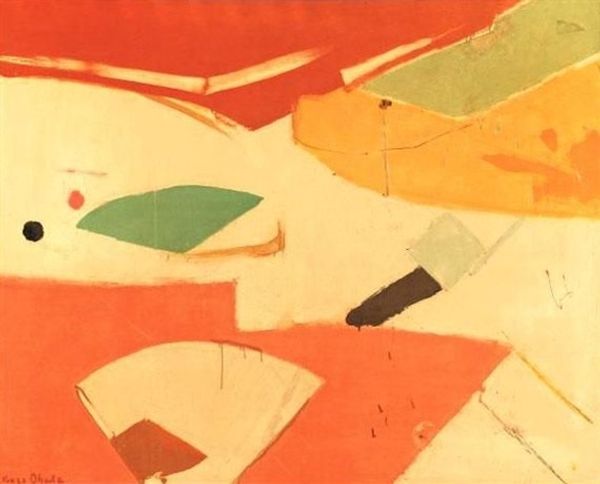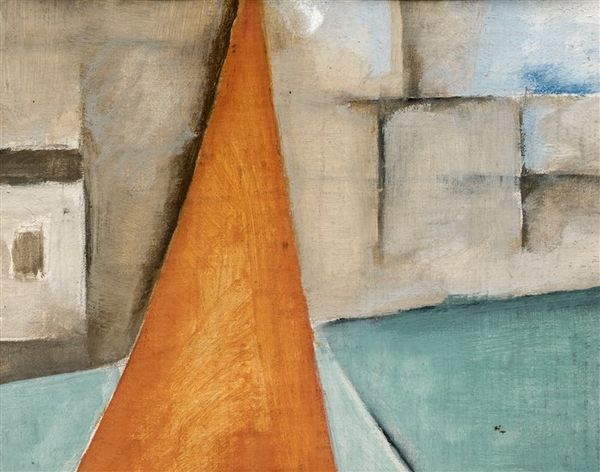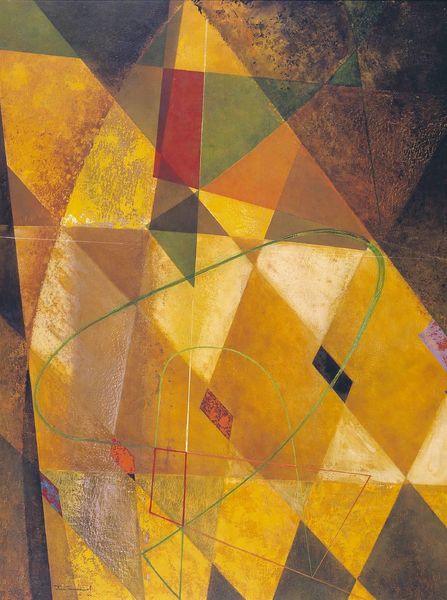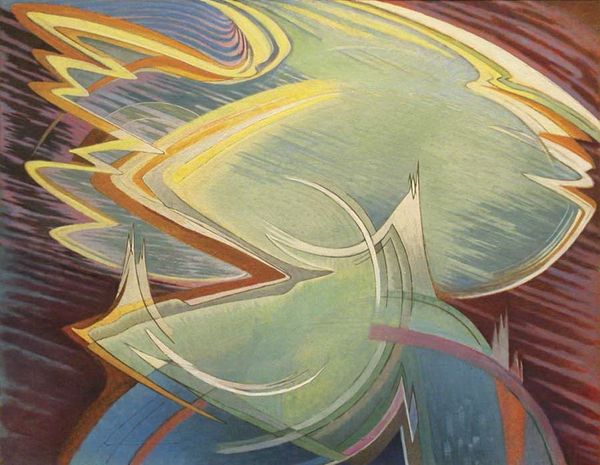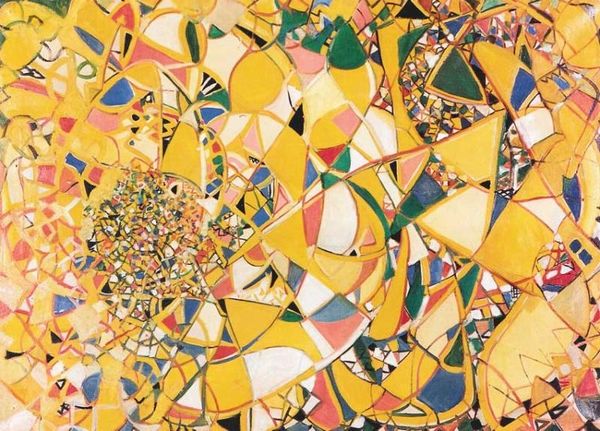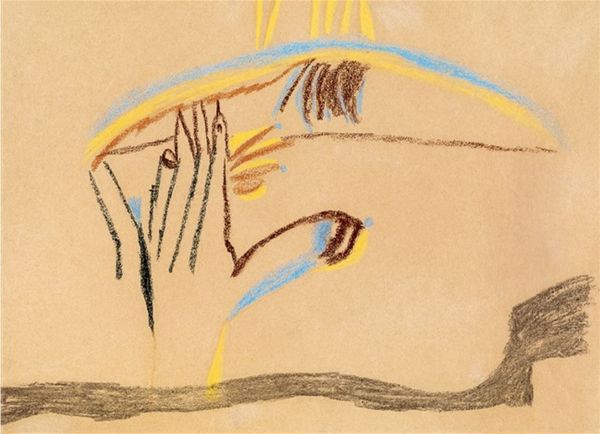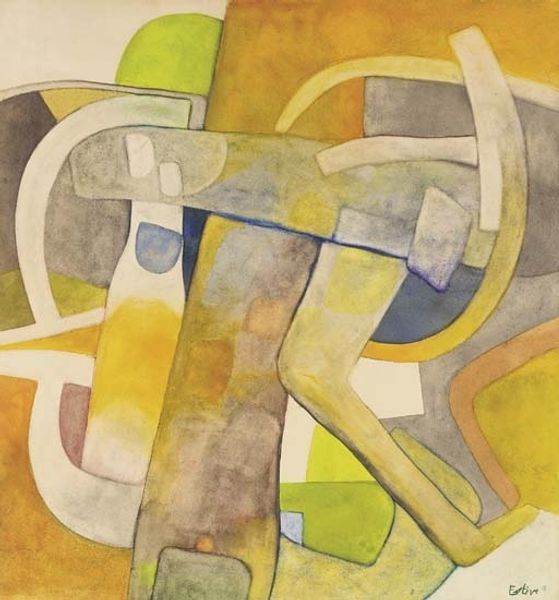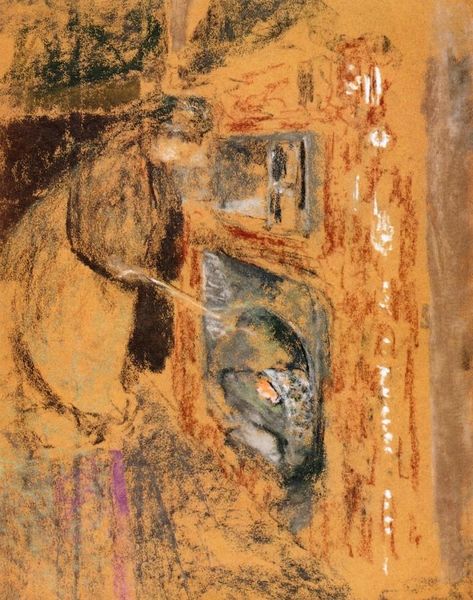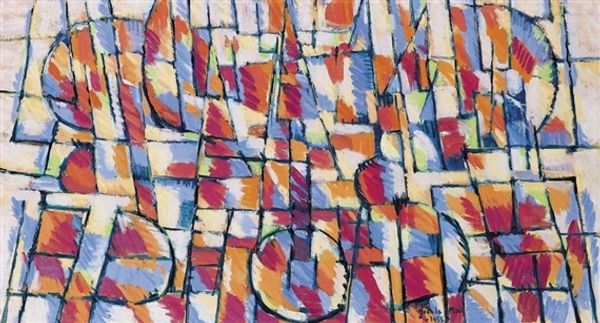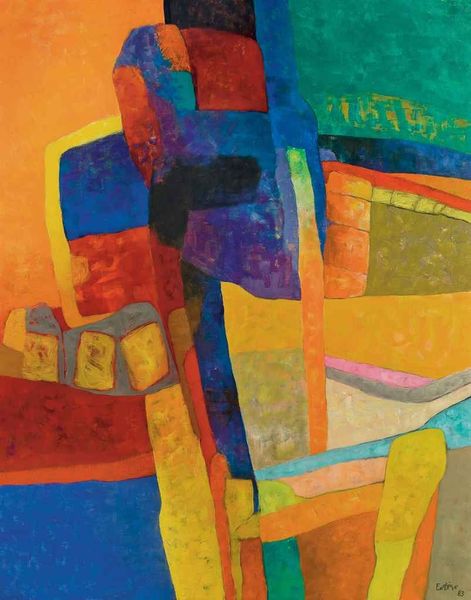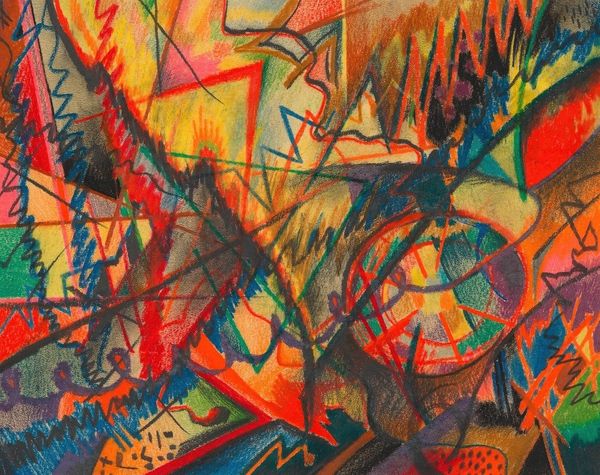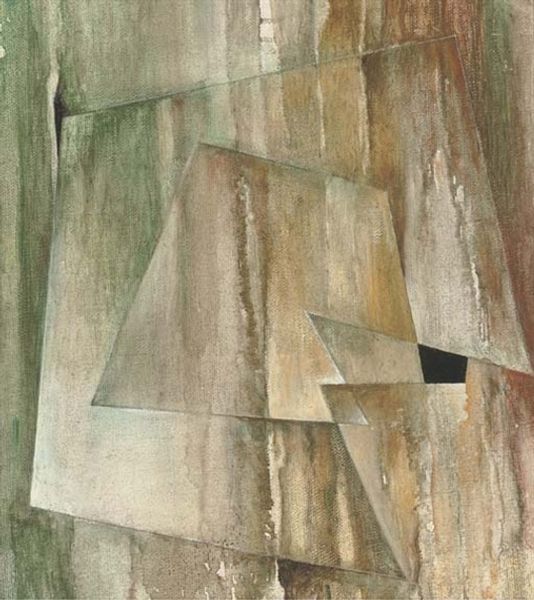
painting, watercolor
#
painting
#
oil painting
#
watercolor
#
geometric
#
abstraction
#
modernism
#
watercolor
Copyright: Public domain
Curator: This is "Ancestral Nature," a work created around 1938 by Lajos Vajda, using both watercolor and oil on canvas. Editor: My immediate reaction is a feeling of earthiness, a sun-baked landscape. The geometric shapes give it an abstract feel, yet the colors are so grounded. Curator: Vajda, a key figure in Hungarian modernism, was deeply influenced by psychoanalysis and a quest for cultural and spiritual identity within Central Europe. This piece reflects that, a fractured landscape mirroring internal complexities of identity after the traumas of war and shifting borders. Editor: It's intriguing how the materiality reinforces this reading. The use of both watercolor and oil speaks to layering and juxtaposition—a blending of techniques as disparate as the cultural influences he navigated. What can you tell me more about his materials? Curator: While seemingly simple, the blended media underscores Vajda’s complex layering of lived experience: of tradition clashing with modern angst. The interplay, it appears, conveys themes such as loss, displacement, and ancestral roots disrupted by early 20th-century sociopolitical events. Editor: I see. This layering mirrors the historical and cultural strata embedded in the work, right? How social factors impact material choices: economic constraints in Hungary at the time probably drove resourcefulness and the use of accessible materials. This choice inadvertently enriched the work’s narrative. Curator: Exactly, and this painting also marks a stage where Vajda moved beyond simple surrealism, integrating personal experiences and a deeper study of local motifs into abstraction. Its success may lie not only in technique or context, but in revealing layers through process that convey meaning in this transitional time. Editor: For me, the blending embodies a sort of precarity, or uncertainty; which I gather echoes historical pressures of the period? A poignant example of art revealing our fraught relationship with place, material conditions and belonging. Curator: Agreed. In many ways, it acts as a document, too, offering insight on human identity against forces of war, politics and industrialization through creative production itself. Editor: Thinking about these themes reminds us that artwork is as much about reflection on a past and present, both individual and societal. Curator: Indeed. Ultimately, I am struck by its delicate balance between personal and shared histories rendered in colors of soil and memory.
Comments
No comments
Be the first to comment and join the conversation on the ultimate creative platform.
